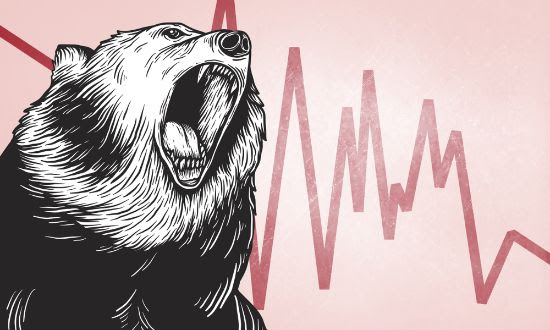
WISDOMTREE- Weekly commentary from ProfessorProfessor Jeremy J. Siegel (07/05/2022) :
Clearly, the most important issue for the risk markets right now is the economic data that are deteriorating very rapidly. Three weeks ago, I personally pivoted from calling for the Fed to take control of the inflation narrative with aggressive rate hikes to thinking the more appropriate path might be a 25 basis point hike at the next meeting, if the data continue to worsen.
First quarter GDP came in at -1.6% in the latest report, while the latest second quarter GDP estimates have been marked down from +1% just three weeks ago to now -1.5%. I have rarely seen such a quick lowering of GDP growth estimates. Momentum of the economy has turned south, and it appears we’ll have two consecutive quarters of declining GDP, which is one of the unofficial standards to describe a recession. Of course, this is not the official definition of a recession, which has more factors and will get called by the National Bureau of Economic Research recession dating committee.
One quick history lesson on this recessionary standard: in the post-World War II period, when real growth in the economy was 3 to 4%, a move to negative growth for two quarters was a sign of a sharp contraction. Now, with slower population growth and declining productivity trends, our economic growth potential is closer to 2%, so I believe it will be likely to experience negative GDP growth more often.
Back to the current situation the employment component of the ISM report on Friday was dismal and well under expectations. The labor market appears very strong, so I am curious to see the payroll report coming up this Friday. How can we have strong payroll growth with declining GDP in the first half? It implies falling productivity levels. Declining economic productivity is also at odds with the robust corporate profits companies reported in the first half of the year. However, earnings growth did not keep up with inflation, so you did see a drop in real earnings. But we did not have a real collapse in earnings either.
The money supply report for May came out last week and it showed a very marginal increase from April, essentially unchanged. The total money supply growth in 2022 has been only 1%, which comes after 25% money supply growth in 2020 and nearly 15% in 2021. The monetary tightening and higher real rates has effectively slowed down economic growth.
If our economy is officially in a recession, it will be one of the strangest recessions I’ve witnessed with record-low unemployment rates. Jobless claims remain very low; the labor market is the only market that remains strong and services with high labor constraints will be the one remaining key impulse for inflation.
What can turn this bear market around? When the Fed changes tone and conveys that the cumulative increase in rate hikes and tightening of financial conditions is sufficient for bringing inflation down. I believe real bond rates went too high. The ten-year TIPS rate got up to 75 basis points but is down to 50 basis points as of Friday. The equilibrium rate in my view may be zero or negative, so we are still in a tightening mode.
